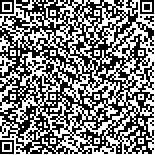孟庆福,黄娟娟,陆艳,等.血红蛋白水平与老年卒中患者认知障碍的相关性研究及预测价值分析[J].中华物理医学与康复杂志,2025,47(3):237-242
扫码阅读全文

|
| 血红蛋白水平与老年卒中患者认知障碍的相关性研究及预测价值分析 |
|
| |
| DOI:10.3760/cma.j.cn421666-20240510-00359 |
| 中文关键词: 老年卒中患者 卒中后认知障碍 血红蛋白 简易精神状态量表 |
| 英文关键词: Elderly Stroke Cognitive impairment Hemoglobin Mini-mental State Examination |
| 基金项目:江苏省中医药科技发展项目面上项目(MS2022140) |
|
| 摘要点击次数: 1878 |
| 全文下载次数: 1861 |
| 中文摘要: |
| 目的 回顾性分析血红蛋白(Hb)水平与老年卒中患者认知障碍(PSCI)的相关性,并探讨Hb水平辅助诊断及预测老年PSCI患者的效能。方法 选取2022年1月至2023年12月期间在南京医科大学第二附属医院康复科住院治疗的首发脑卒中老年患者及在健康管理中心体检的健康老年人作为研究对象,根据老年卒中患者的简易精神状态量表(MMSE)评分将其分为卒中后无认知功能障碍组(PSNCI)和PSCI组,将健康体检老年人纳入到健康组。统计各入组对象的一般资料数据、白细胞计数(WBC)、中性粒细胞计数(NC)、淋巴细胞计数(LC)、单核细胞计数(MONO)、血小板计数(PLT)及Hb、总胆固醇(TC)、甘油三脂(TG)、高密度脂蛋白胆固醇(HDL-C)、低密度脂蛋白胆固醇(LDL-C)含量,并计算单核细胞与高密度脂蛋白胆固醇比值(MHR)、中性粒细胞与淋巴细胞比值(NLR)、血小板与淋巴细胞比值(PLR)等指标,分析3组对象上述指标间的差异,并探讨影响老年卒中患者发生PSCI的风险因素。 结果 3组老年对象年龄、性别、WBC、MONO、PLT、TG、MHR组间差异均无统计学意义(P>0.05),NC、LC、Hb、TC、HDL-C、LDL-C、NLR及PLR组间差异均具有统计学意义(P<0.05);Spearman相关性分析显示3组老年对象的NC、NLR、PLR与MMSE评分具有负相关性(P<0.05),LC、Hb、TC、HDL-C、LDL-C与MMSE评分具有正相关性(P<0.05);logistic回归分析显示低水平Hb是老年卒中患者发生PSCI的独立风险因素(P<0.05);采用Hb水平预测老年卒中患者发生PSCI的曲线下面积(AUC)为0.794,约登指数最大值为0.496,Hb临界值为138.5 g/L。 结论 Hb水平与老年卒中患者认知功能具有显著正相关性,Hb水平低于138.5 g/L是老年卒中患者发生PSCI的独立风险因素,较高水平的Hb可能有助于老年卒中患者在认知功能方面获益。 |
| 英文摘要: |
| Objective To retrospectively seek any correlation between hemoglobin (Hb) levels and post-stroke cognitive impairment (PSCI), and to explore the value of Hb levels in PSCI diagnosis and prediction. Methods The Mini-mental State Examination (MMSE) was used to sort elderly persons who had suffered a first stroke into a PSCI group showing cognitive impairment and a PSNCI group which was not cognitively impaired. Healthy counterparts undergoing physical examinations were selected into a healthy group. Everyone′s white blood cell count (WBC), neutrophil count (NC), lymphocyte count (LC), monocyte count (MONO), platelet count (PLT) and Hb, total cholesterol (TC), triglyceride (TG), high density lipoprotein cholesterol (HDL-C), and low density lipoprotein cholesterol (LDL-C) were recorded. Monocyte to high density lipoprotein cholesterol ratios (MHRs), neutrophil to lymphocyte ratios (NLRs), and platelet to lymphocyte ratios (PLRs) were calculated. The differences among the three groups were compared seeking to identify risk factors predicting PSCI. Results There were no significant differences in age, gender, WBC, MONO, PLT, TG or MHR among the three groups, on average. But there were significant differences in NC, LC, Hb, TC, HDL-C, LDL-C, NLR and PLR. Spearman correlation analysis showed that NC, NLR and PLR were negatively correlated with the average MMSE score, while LC, Hb, TC, HDL-C and LDL-C were positively correlated with it. Logistic regression analysis showed that a low level of Hb was an independent risk factor for PSCI for the elderly stroke survivors. The area under the receiver operating characteristics curve (AUC) for Hb was 0.794 for predicting PSCI in elderly stroke patients, with a maximum Youden index of 0.496. The critical value of Hb was estimated as 138.5g/L. Conclusions Hb levels can significantly predict the cognitive functioning of elderly stroke survivors. An Hb level below 138.5g/L is an independent risk factor for PSCI, while higher Hb levels may indicate cognitive benefits. |
|
查看全文
查看/发表评论 下载PDF阅读器 |
| 关闭 |
|
|
|